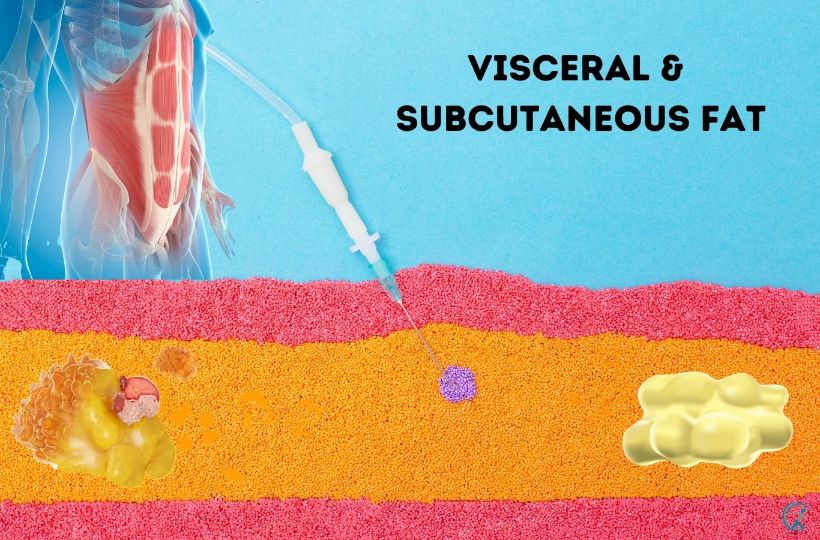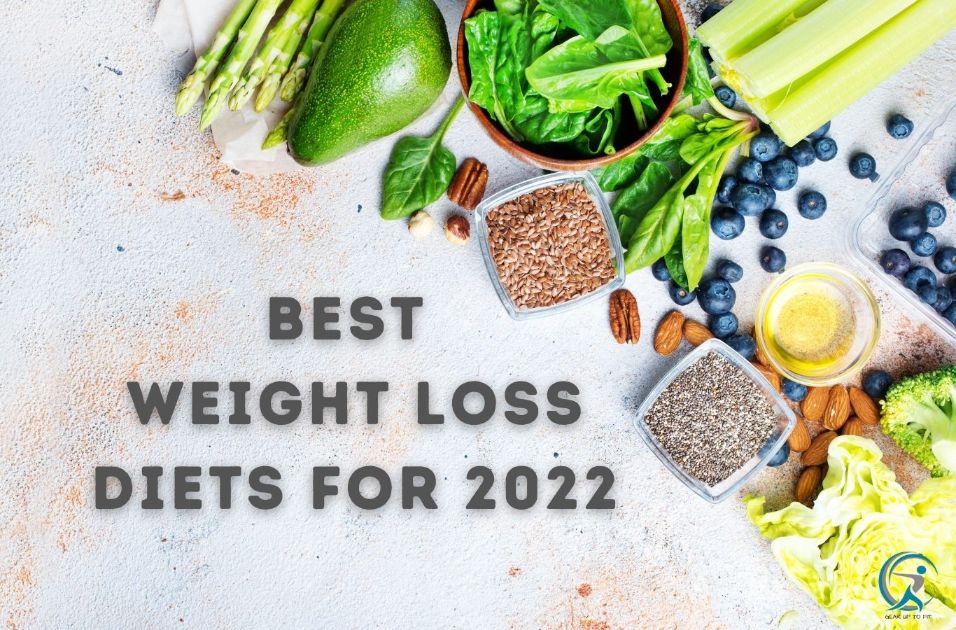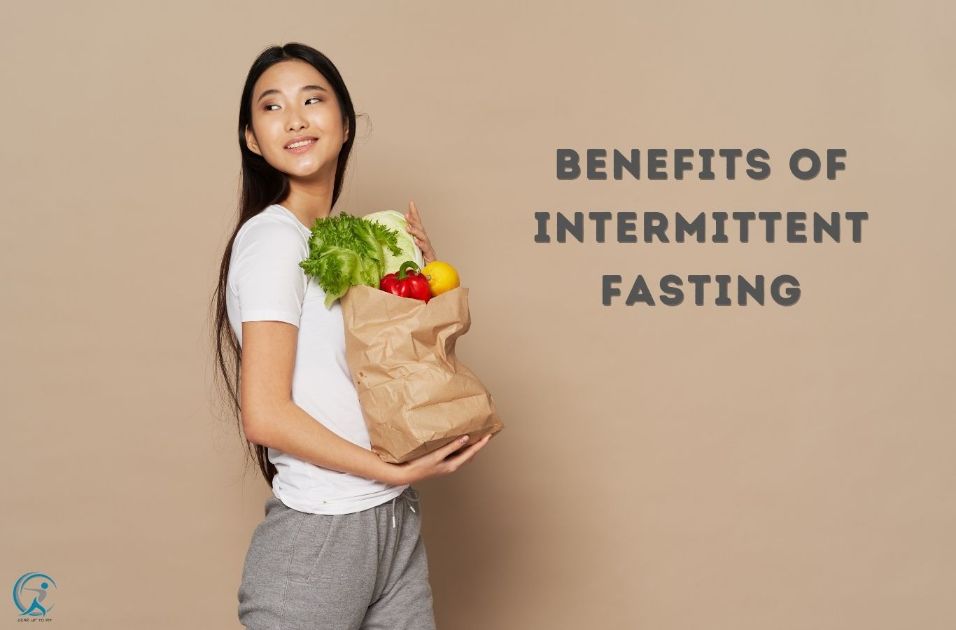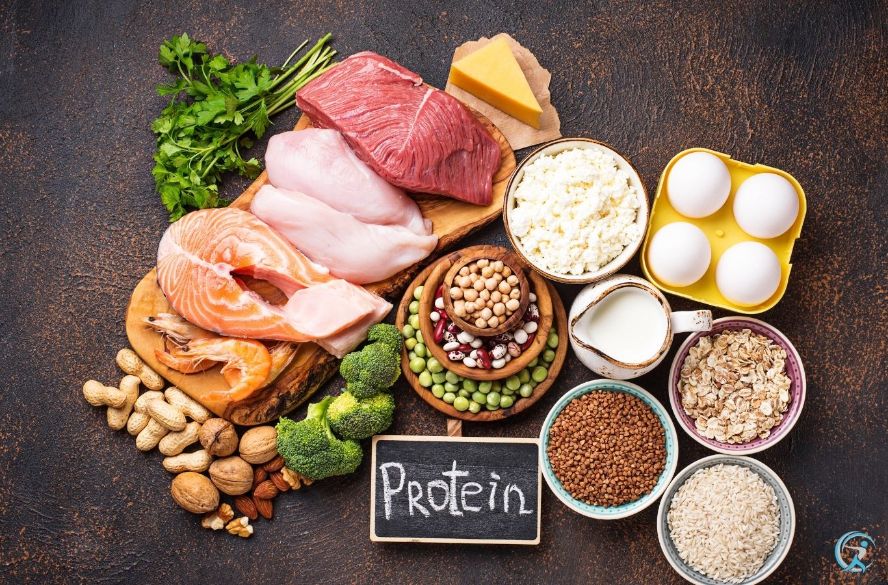Best diets for losing belly fat help you achieve weight loss without compromising your nutrition.
Losing belly fat is easier said than done. Plenty of fad diets promise quick fixes, but they don’t consistently deliver. If you want to get rid of those stubborn extra pounds, then it’s time to try something new.
Every year, the average person gains around 2kg (4.4lbs) of body fat. This weight gain is often concentrated in the abdomen area. If you’re struggling to lose that spare tire, then you’ll probably need to take a step back and look at some other ways to shed those unwanted kilos.
You might have heard of intermittent fasting or keto before, but these aren’t the only two options for losing belly. There are dozens of different diets out there that claim to help you lose weight fast. Some of them even promise to burn off your belly fat within days.
The best diet for losing belly fat is the one you will actually stick to
The best diet for losing belly fat works on a customized plan for your needs. Don’t force yourself to follow a diet that doesn’t align with your eating habits. Don’t go on a strict paleo or ketogenic diet if you are not a fan. If you love carbs and can’t see yourself cutting them out completely, don’t bother going on the Atkins Diet or any other low-carb diet.
The key to losing weight is finding the right balance of calories and exercise. Once you understand how many calories you must eat to maintain your current weight (or lose weight if that is your g), you can figure out which foods will provide those calories.
A recent review published in the Journal Obesity examined studies related to the impact of spinach consumption. It concluded that it could play a role in reducing abdominal fat.
Define the different types of abdominal fat

It’s not that fat is bad for you, but the wrong kind of fat can become a problem. If you find yourself packing on the pounds around your midsection, there are dozens of reasons why. But first, let’s talk about what belly fat is.
Visceral fat is stored in the abdominal cavity and wraps around internal organs like the liver and intestines. This is where most people tend to carry their excess weight since it’s easy to get at and hard to lose.
Subcutaneous fat lies just below the skin, so it’s easy to see if you pinch an inch (or more). You know, that spare tire you’ve been carrying around for as long as you can remember? That’s subcutaneous fat.
Subcutaneous fat isn’t a huge concern for most people because it doesn’t pose any serious health risks. Visceral fat, on the other hand, has been linked to a whole bunch of nasty conditions, including:
- High blood pressure
- Heart disease
- Diabetes
- Cancer
Meal plan to lose belly fat
You can’t spot reduce, but you can use this meal plan to help reduce your body fat, which will make it easier for you to lose weight from your belly.
When we talk about meal plans for weight loss, we often focus on the idea of eating less. But this isn’t a good approach if you’re trying to slim down and tighten up your stomach area. That’s because when you eat less food, your body can enter a starvation mode that slows your metabolism down. The last thing you want is to starve yourself just so you can lose weight in one specific spot on your body.
Instead of trying to cut calories, focus on eating nutrient-dense foods that will give you energy without leaving you feeling hungry all day long. This way, you’ll consume fewer calories without having to count them or feel hungry all day long.
Here are some tips that can help you lose belly fat:
1) Drink plenty of water – Water helps in flushing out toxins and also keeps us hydrated which is essential for overall health.
2) Sleep well – A good night’s sleep is necessary for the proper functioning of the body. When we don’t sleep well, our hormones get out of balance which leads to weight gain, especially around the midsection area.
3) Eat small meals throughout the day – Eating 3 big meals a day will cause blood sugar spikes that lead to cravings for unhealthy food choices which can result in weight gain. Instead, try eating 5-6 smaller meals throughout the day so that there are fewer spikes in blood sugar levels and hence fewer cravings for junk food!
4) Exercise every day – Exercise helps in burning fat by raising your metabolic rate which means your body will burn more calories throughout the day than someone who doesn’t exercise regularly! But don’t overdo it because excessive sweating can lead to dehydration which causes bloating! So choose a form of exercise that you enjoy, and stick with it.
5) Eat Slowly And Chew Your Food Properly – You might not be eating too much but just eating slowly and chewing your food properly can help reduce bloating. When you eat quickly or drink through a straw, you take in air and this can lead to bloating. Who knew?
6) Eat More Fibre-Rich Foods – It’s no secret that fiber is good for you and eating more fiber-rich foods can help reduce bloating. Fiber helps the body eliminate toxins and waste products that can cause gas and water retention in the digestive system.
7) Drink Fewer Fluids With Meals – Drinking fluids with meals can make digestion more difficult because it dilutes stomach acid which is needed to break down food
What are the best diets for losing belly fat

Before choosing the best diet for losing belly fat, you should consider your individual needs and preferences. Also, any medical condition or allergies should be taken into consideration carefully. The best way to achieve success is by being patient and consistent with your chosen best weight loss plan, so it becomes an integral part of your lifestyle!
There are many best diets that you can follow, but not all of them will work for everyone. Here is a list of the best diets that have been proven to work for most people:
- High protein diet
- Low carbohydrate diet
- Intermittent fasting diet
- Vegan diet
- Atkins Diet
- South Beach Diet
- Zone Diet
- Mediterranean Diet
- Dukan Diet
For best results, make sure your diet plan to reduce belly fat has an exercise component
The best diet for losing belly fat promotes both a calorie deficit and a slight reduction in calories from carbohydrates. You may have heard the phrase “abs are made in the kitchen”; this is true.
The best diet for losing belly fat is one that you’re already on. This can be as simple as eating more vegetables and less red meat or as complex as intermittent fasting, but make sure you’re eating fewer calories than you’re burning.
First, let’s get one thing straight: you can’t spot reduce fat. If you want to lose belly fat, you’ll need to lose overall body weight by reducing the amount of calories you consume daily. Secondly, there is no one-size-fits-all plan that works for everyone when it comes to exercising.
For best results, make sure your diet has an exercise component, and swap out empty carbs (sodas, white bread, pastries) with whole grains (quinoa, oats), some lean protein (chicken breast), and plenty of vegetables. Adding more fiber into your diet is also important: It gives you a feeling of fullness when bacteria metabolize it in your gut.
Drink water to keep yourself hydrated; other beverages will only lead to dehydration.
Try intermittent fasting

This type of best diet for losing belly fat doesn’t require counting calories or portion sizes and relies on timing instead.
The best diet for losing belly fat involves phasing certain foods out of your diet and focusing on healthy replacements. For example, replace the 3 large meals a day with 5-6 smaller meals. The best diet for losing belly fat should include monounsaturated fats such as nuts, avocados, olives, and canola oil. It should also include fish high in omega-3 fatty acids, protein, and fiber.
Eating fiber-rich foods, especially viscous fiber, can help you feel full and eat less. This article examines the effects of probiotics on weight loss. Several studies suggest that they can help you lose weight and belly fat.
The best diet for losing belly fat includes intermittent fasting (IF). Intermittent fasting is a pattern of eating involving regular short-term fasts and eating your average amount of calories on non-fasting days.
Intermittent fasting is an effective tool to lose weight and improve health. It can help you eat fewer calories and optimize numerous hormones related to fat loss.
Intermittent fasting (IF) eliminates these problems by replacing complicated calorie-counting with simple timing rules. You have likely heard of IF before, but perhaps you have only a vague idea of what it is all about or have conflicting opinions on whether it works.
IF is one of the simplest and most effective ways to lose weight and keep it off because it creates an energy deficit without requiring you to count calories or make complex dietary changes. Plus, it can help you burn more fat and lose belly fat faster than other diets would.
Eating more protein, in general, may help with weight loss, but try to avoid processed meats like bacon and sausage as they are high in sodium and saturated fats

Protein is an essential nutrient for weight control. High-protein diets have been shown to boost metabolism by 80–100 calories per day while shaving 441 calories per day off your diet. One study also showed that eating a high-protein breakfast increased feelings of fullness, decreasing hunger and intake throughout the day.
Protein is an essential nutrient for effective fat loss. It helps to keep your appetite under control and promotes fat burning by boosting your metabolism. Protein also helps you maintain lean muscle mass, which encourages your body to burn calories at a faster rate.
You can get protein from various sources, but make sure the majority of your daily protein intake comes from lean sources. Some great examples include grass-fed beef, bison, wild salmon and fish, cage-free eggs, chicken breast, turkey breast, and tofu.
One study enrolled obese patients and found that a diet supplemented with soluble fiber reduced belly fat. The study also found that the benefits of fiber were independent of other dietary factors, such as alcohol and saturated fats.
In addition to soluble fiber, insoluble fiber has been shown to burn fat by increasing satiety and decreasing hunger.
In one 4-week study, researchers found that eating 5–10 grams of soluble fiber per day led to a loss of 0.5 inches (1.3 cm) from the waistline, compared to no fiber.
The researchers note that both forms of fiber can help you lose body fat and reduce waist size, but soluble fiber may be especially effective at burning visceral belly fat.
If you’re having trouble getting enough fiber in your diet, try supplementing with a fiber supplement like glucomannan.
Make sure your best diet for losing belly fat also includes plenty of vegetables, particularly leafy greens

Fruits and veggies provide fiber, vitamins, minerals, phytochemicals — substances that protect against cancer and heart disease — and loads of water, which will fill you up and keep you feeling satisfied longer.
Vegetables are also packed with antioxidants, fighting free radicals and promoting healthy skin, hair, eyes, and even brain function. They’re also rich in vitamin C, folate, potassium, and magnesium, not to mention fiber.
Leafy green vegetables are among the most nutritious foods on Earth. They’re loaded with vitamins, minerals, and antioxidants that facilitate healthy bodily functions, including your digestive system. On top of that, they have beneficial effects on weight management and appear to reduce belly fat accumulation.
During the 12-week study period, participants experienced reductions in waist circumference and hip circumference and significant decreases in body fat percentage and body weight. The leafy green group also showed a 9 percent reduction in belly fat, while the control group had no significant changes in belly fat.
The leafy greens are so powerful because they’re high in water content and low in calories. They’re also highly filling, making them an excellent addition to your weight loss diet plan.
Bottom Line
Although you may be tempted to speed up your home weight loss efforts with a diet pill, don’t go for it. There is no scientific evidence showing that diet pills work or that they are safe for long-term use. How far you can go with a flat belly diet plan depends, in part, on your commitment to healthy eating and your willingness to take the time and effort needed to follow a sensible program. See which diets seem to hold the most promise, then do additional research before deciding on one. You deserve a flat belly!
FAQ
Yes, if you cut out all the things that are bad for you and start eating more healthy foods.
Saturated fats are found in foods such as red meat, butter, cheese, coconut oil, palm oil, and dairy products like milk and cream. They can be harmful to your health if consumed in excess.
Trans fats are found in foods like cookies, cakes, crackers, fried foods, pastries, pies, and some margarine. They can also be added to shortenings used for cooking.
Healthy fats are important for losing belly fat because they help with weight loss and prevent heart disease. These include olive oil, avocados, nuts, seeds, fish, and other fatty foods.
The best diets for maintaining healthy blood sugar levels include eating whole foods such as fruits, vegetables, lean proteins, and whole grains.
The best diets for losing belly fat

As a veteran fitness technology innovator and the founder of GearUpToFit.com, Alex Papaioannou stands at the intersection of health science and artificial intelligence. With over a decade of specialized experience in digital wellness solutions, he’s transforming how people approach their fitness journey through data-driven methodologies.

